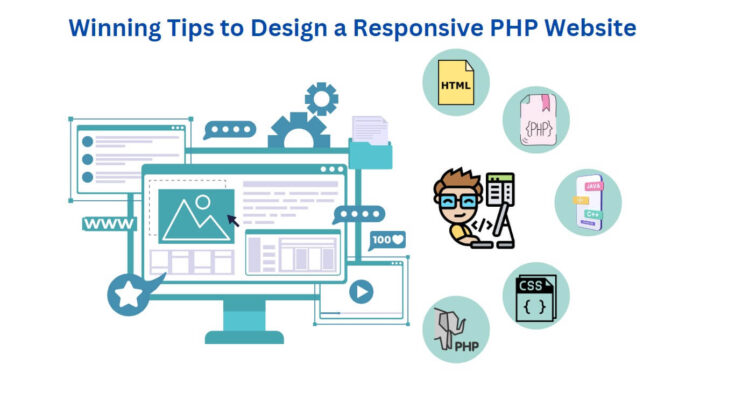In the field of web design and development, we are now at the place where we need to update ourselves with the latest technologies. Before making a website, professionals need to upgrade themselves to modern devices. For numerous websites, making the website version for every resolution and device is impossible or, at the very least unattainable. Here a website feature demands the property of responsiveness.
Before we get to the scenario, let’s define what is responsive design
Responsive Web design is a method that suggests that development and design be aware to the user’s actions and surroundings in relation to the size of the screen, the platform used and the screen’s orientation.
The process is comprised of an array of layouts and grids with flexible grids as well as images and effective utilization of CSS media queries. When a user switches between their laptop and iPad and vice versa, the website will automatically adjust to accommodate the resolution of the image, size and scripting capabilities. You may also need to look at the settings on their devices. If they are using a VPN on iOS for their iPad, the site should not hinder access for the website user. That is, the website must have the ability to adapt to the preferences of the user instantly.
The best tips to create an HTML responsive PHP site
Framework planning and the design
Before you start, make a list of the achievements you want your website to achieve, the strategies for the internet you’ll utilize to market it, and do some research about your audience to create your website’s fundamental design. Locating the right PHP web development firm in India is a lot easier after you’ve compiled your list of needs, expectations, and success metrics.
Always opt for an SEO-friendly design.
Once you’ve thought about and assessed everything, take a look at your customers, their computer literacy levels, the colour they would like to look at, the elements they will be able to relate to, and other important aspects that could make them feel special. Make sure your content is paired with keywords for SEO, and ensure an optimal density of keywords to achieve better rankings in Google results.
Once everything is in place, you are ready to move forward and create the design for your website, ready to go live. Make sure you collect the feedback of your users, as it aids in improving the efficiency, appearance and accessibility of your website.
Do a thorough website analysis
After you’ve got the design, strategy and layout in place, Think about your primary competitors. Research their systems, their business models, the strategies they use and the methods they employ in order to reach their clients. Discover your competition, identify the keywords used to target your market, and create a solid SEO strategy.
We now need to know the importance of responsive design. In a significant way:
If you’re brand new to web development, design, and blogging, you may think about why responsive design is important.
The answer is easy. It’s not enough to design for just one device. Mobile web browsing has surpassed desktops and now accounts for the majority of website traffic, with more than 51%.
When more than half of your visitors are using mobile devices to browse the web, more is needed to provide them with a site specifically designed specifically for desktops. It’s difficult to read and use and could result in a poor user experience.
If you decide to post ads via social media platforms or employ an organic approach such as YouTube SEO, mobile users will generate most of your traffic.
When your pages for landing are not designed for mobile devices and aren’t user-friendly, it will be challenging to get the most value from the marketing effort.
Let’s look at the building blocks of responsive designs.
- HTML and CSS: The basis for responsive designs is the integration of HTML and CSS, two languages that manage the layout and content of any browser.
- Images that respond: The most basic form of responsive images uses the same principle: a dynamic layout making use of a dynamic unit to regulate the width or height.
- Speed: If you’re trying to design a responsive layout for your site, the speed at which your website loads is a must.
- Layout for Flexbox: Although the layout is based on percentages, many designers and web developers believed it wasn’t sufficient or flexible enough. Flexbox is a CSS module created to provide an efficient method to lay out several elements. The flex container can expand the elements to take up space or reduces the size to stop the overflow.
- Media queries are an essential component of CSS3 that allows you to render your content in a way that is able to adjust to various factors such as display size and resolution.
Here we’ve shared the basics of responsive web designing for PHP websites. If you’re new to this industry, then you must connect with best PHP development company to make your website responsive to every updated device.




